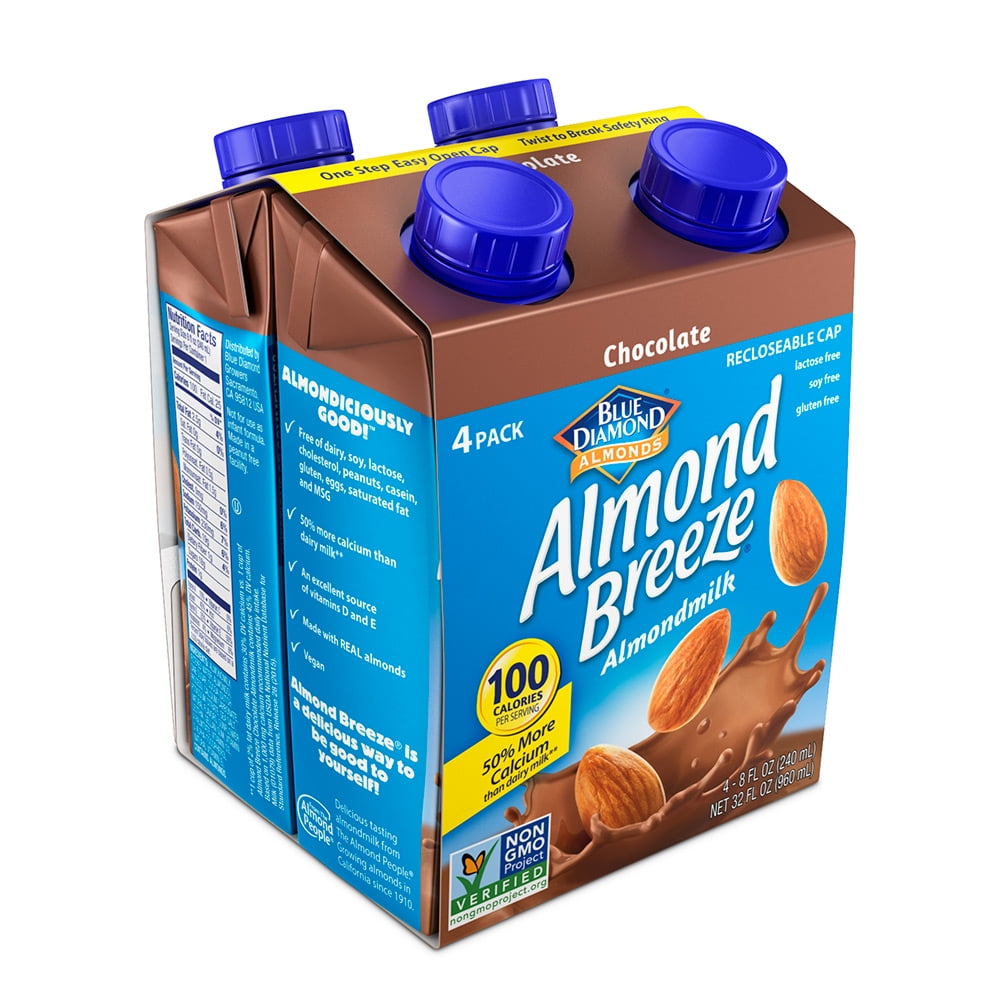

After the age of 1, cow’s milk can be introduced to your infant’s diet ( 22). Breastfeed or use infant formula exclusively until 4–6 months of age when solid food can be introduced ( 22).Īt 6 months of age, offer water as a healthy beverage choice in addition to breast milk or formula. Unsuitable for infantsĬhildren younger than 1 year should not drink cow’s or plant-based milks, as these can prevent iron absorption. If you don’t avoid animal products, eggs, fish, chicken, and beef are all excellent protein sources ( 21). Many dairy-free and plant-based foods are high in protein, including beans, lentils, nuts, seeds, tofu, tempeh, and hemp seeds.
#ALMOND BREEZE ALMOND MILK SKIN#
Protein is essential for many bodily functions, including muscle growth, skin and bone structure, and enzyme and hormone production ( 18, 19, 20). Lacks proteinĪlmond milk provides only 1 gram of protein per cup (240 ml) while cow’s and soy milk provide 8 and 7 grams, respectively ( 16, 17). While almond milk has many benefits, there are some important downsides to consider. However, sweetened almond milk can be loaded with sugar.

Unsweetened almond milk is naturally low in sugar and high in vitamin E, a strong disease-fighting antioxidant.

It’s naturally low in sugar, providing a total of 2 grams per cup (240 ml) ( 5). If you’re trying to limit your sugar intake, unsweetened almond milk is a great choice. In fact, 1 cup (240 ml) of chocolate-flavored almond milk can pack upwards of 21 grams of added sugar - more than 5 teaspoons ( 15). Many plant-based milks are flavored and sweetened. Thus, choosing food and beverages naturally low in sugar can help you manage weight and limit your risk of certain chronic diseases ( 13, 14). Most people eat too much added sugar in the form of desserts, drinks, and sweeteners. One cup (240 ml) of commercial almond milk provides 110% of the DV for vitamin E, making it an easy and affordable way to meet your daily needs ( 5). Vitamin E promotes eye and skin health and may play a role in protecting against conditions like heart disease ( 10, 11, 12).
#ALMOND BREEZE ALMOND MILK FREE#
High in vitamin EĪlmonds are an excellent source of vitamin E, which is a fat-soluble vitamin important for protecting your cells from free radical damage ( 9). However, it’s not a good source of protein.Īlmond milk may provide certain health benefits. During processing, it’s commonly fortified with calcium and vitamin D. SummaryĪlmond milk is naturally high in vitamin E, a disease-fighting antioxidant. Homemade versions are not a good source of these nutrients ( 7, 8).įinally, almond milk is low in protein, with 1 cup (240 ml) providing only 1 gram ( 5). Some varieties are fortified with calcium and vitamin D, which are important nutrients for bone health. One cup (240 ml) of commercial almond milk provides ( 5):Īlmond milk is an excellent and natural source of vitamin E, which is a fat-soluble antioxidant that helps protect your body from free radical damage ( 6). With only 39 calories per cup (240 ml), almond milk is very low in calories compared with cow’s milk and other plant-based beverages.


 0 kommentar(er)
0 kommentar(er)
